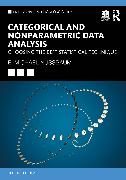NATO Missile Defense and the European Phased Adaptive Approach
BücherAngebote / Angebote:
In 2010, NATO decided to expand its ballistic missile defense program, in part because of the American offer to include its European Phased Adaptive Approach (EPAA) as the centerpiece of an expanded effort. For the Allies' part, few have actually contributed tangible ballistic missile defense assets, in terms of missile interceptors, radars or other sensors, or ballistic missile defense-related platforms. This is likely to have significant implications for the U.S. Army, which has an important but largely underappreciated role in NATO missile defense today. In particular, the Army is likely to face increased manpower demands, materiel requirements, and training needs in order to meet the demand signal created by the NATO ballistic missile defense program. Additionally, Army units involved directly in or in support of ballistic missile defense are likely to face a higher OPTEMPO than currently projected. Ultimately, this will exacerbate the perceived imbalance in transatlantic burden-sharing...
Folgt in ca. 10 Arbeitstagen




